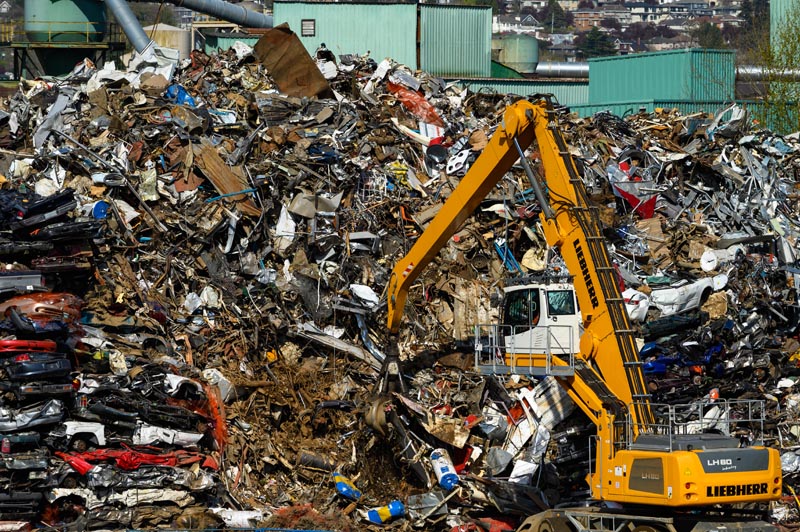
As a modern metals recycling facility, Richmond Steel Recycling (RSR) processes thousands of tons of recyclable metals every month. From its earliest beginnings in the 1960s and early 1970s, it was focused on recycling what modern society at the time termed “junk.”
The word “junk” was very much a part of the daily vernacular at the time. Many businesses were named “junkyards” and guarded by “junkyard dogs.” The latter of which took on a life of itself as a slang term for being mean and tough. A famous wrestler even took on the name.
Popular on television at the time, viewers tuned in weekly to watch the ramblings of scrap metal collector Fred Sanford and his adult son – “We buy & sell junk” clearly emblazoned in the opening credits and on the patina laden pick-up truck they used to collect it.
For the past couple of decades, the word junk has never even been a part of our regular vernacular here at RSR.
We have many long term employees and customers at RSR, some that have been around since the 1970’s and 80’s. They have been first hand witnesses to the changing perceptions of junk in society and the drive to recycle more to lessen our impact on this planet.
As well, they’ve seen some vehicles that were once seen as worn and rusted out junk destined to be sent to a landfill, not only become a commodity as metal, to be recycled but turn into collectible antiques as they became rare and desirable. The best example of this I can think of is the story of one RSR customer sending a vehicle to our auto shredder circa 1982 and the same model in 2020 being entered into the Library of Congress’ National Historic Vehicle Register in the USA.
In today’s blog, I present the story of two cars; both the same year, make, model, and colour that no one today would consider junk.
When you are in the business of shredding old vehicles and steel for re-melting one meets many interesting people that have interesting stories to tell. In one such case a supplier related a memory of his youth in the early 1980’s.
Into fixing up old cars and making them faster for what I’m sure was to take them to a registered track and see how fast they could run, he and his friend came to own a black 1970 Dodge Challenger. Nothing too spectacular about this model at the time, it was a popular car when new and used versions were easily found in weekly classified ads.
This particular car was too rusted for them to repair, but it had an engine that is well known to classic car enthusiasts. Once banned from NASCAR for being too dominant, the 426 street Hemi has always held a special allure to hot rodders and backyard mechanics. The customer and his friend removed the Hemi engine from the car and sent the rusty body of the car to RSR for recycling. As best he can remember, the year was 1982.
In 2020, the USA’s Library of Congress added two vehicles to its National Historic Vehicle Register. One of those vehicles is a black 1970 Dodge Challenger equipped with the Hemi engine that was known to race on the streets of 1970’s Detroit. (read about it here: https://money.yahoo.com/1970-street-racing-dodge-challenger-220000515.html )
One can speculate on the monetary value of these two cars today but one thing is clear, they would not be considered junk today by any stretch of the imagination. – John Rai, Commercial VP Richmond Steel Recycling